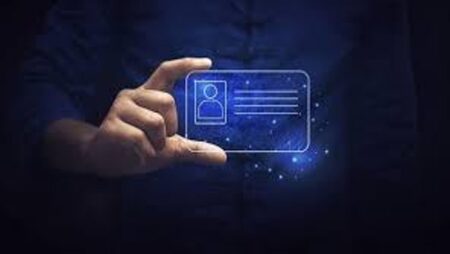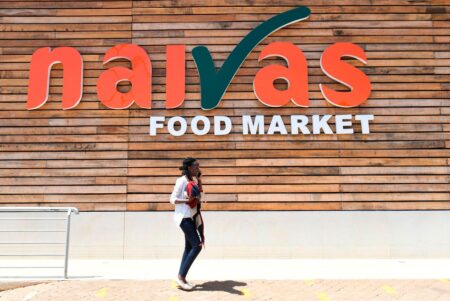Perhaps this is really, as Mike Tuchen of Onside said on Forbes in the spring, the year when digital identities start to become mainstream. With announcements from Apple
AAPL
Identity Friction
It has long been apparent that there is no way forward in fintech (or, in fact, pretty much any other sector) without the development of digital identity infrastructure. There’s certainly a need for action. In the U.S. (and the U.K., for that matter) there is no such “finance passport” or whatever. Every time I interact with a new financial institution, accountant, lawyer or business partner I find myself having to e-mail scans of utility bills, pictures of passports and (and this continues to astonish me) PDFs of corporate letterhead in order to get anything done. This is an incredible friction in the economy, a waste of time and money for all concerned.
For many years I have thought that banks ought to be the right institutions to bring population-scale digital identity services into the financial sector in order to create the environment for change, competition and collaboration that can deliver better services in such a way as to at least stand up to criminality, scams, frauds and frictions of all kinds. Yet as of today I can’t use my Barclays identity to open an account at Lloyds in Woking, let alone at Society General in Paris or Citi in New York. Perhaps I was wrong and it is not the banks but more forward-thinking and innovative organisations that will bring change.
Well, perhaps this is really, as Mike Tuchen of Onside said on Forbes in the spring, the year when digital identities start to become mainstream. With announcements from Apple and Plaid, it seems that some of the components might be coming together in the U.S. right now. Perhaps there is a seismic shift coming: if not an ID revolution, then the ID earthquake that will change the financial services landscape for the better.
First of all, Apple have announced that iPhone users will be able to present a driver’s license or ID stored in the their wallet app at participating businesses and venues starting later this year. The IDs will be verified by the business’ iPhone. A consumer going into a bar will simply hold their iPhone or Apple Watch near the barman or doorman’s iPhone to verify their age, a consumer going into a care rental outlet will simply do the same to provide their identity. Apple say that the users will be shown what information the business is requesting and the consumers will then consent by authenticating themselves (eg, using FaceID). No additional hardware beyond an iPhone is required for the business to offer this functionality, which is an example of the “tap to prove” simplicity that I have argued before is the way to make digital identity useful in the mass market.
(This implementation of digital identity is, frankly, a long term dream of mine! A few years ago, I wrote about why such an implementation is desirable. I said that if you are trying to get into a nightclub in the U.K., then you need to prove to the doorman that you are over 18. The doorman is looking for a credential that proves you are over 18. I went on to point out that you cannot forge this credential because it is digitally-signed by the issuer. If a 16-year old copies an 18-year old’s certificate, it won’t work, because incoming messages will be encrypted using the 18-year old’s public key, but the 16-year old lacks the corresponding private key, which can’t be copied because it’s never given up. Since transmitting the photograph and appropriate credentials directly into the brain of the nightclub doorman isn’t possible, we will of course need to use some kind of clever communication device instead. Luckily, just such a device already exists: the mobile phone.)
Secondly, in the financial services world, Plaid announced their new Identity Verification service that will consumers to fast track verifications across Plaid-powered apps and services. (You’ll remember that Plaid acquired Cognito, an identity-verification and compliance company, a year ago for some $250m). They are creating a “verify once, verify everywhere” experience that allows for faster verification while remaining KYC compliant for digital finance. I would have thought that the banks themselves would have provided such a service year ago, but perhaps they didn’t see identity as a strategic issue or perhaps they feel that giving up some of the value chain in order to ease the friction of account opening is a good trade off, I couldn’t. Nonetheless, I am sure that this service will be popular with consumers.
ID is a new FMI
Harish Natarajan, the Lead on Payment and Market Infrastructures at The World Bank, recently wrote that financial infrastructure is “the institutions, information, technologies, rules and standards” that provide the foundation for the financial system and enable financial intermediation. On this basis, he is surely correct to identify digital identity as a new type of financial market infrastructure (FMI). Writing in the Journal of Digital Banking (Vol. 7, No. 4, Spring 2023) he points out that the components of such an infrastructure could be provided by a range of trusted entities ranging from government bodies to private sector entities such as banks, telecom companies and large consumer-facing internet companies. It looks like the banks and the telcos are behind the curve.
This isn’t only about fintech, of course, which is why it is such a big deal. The World Economic Forum (WEF) have just published their report on “Reimagining Digital ID” which sets out a fundamental issue, observing that “Despite a sustained focus on ID, the increasingly widespread use of digital technologies, and the rapid development of AI, the internet lacks an ID layer”. Indeed it does, and it may well mean that where the telcos, banks and governments failed to provide one, the fintechs and techfins will step up to the plate.
Read the full article here













